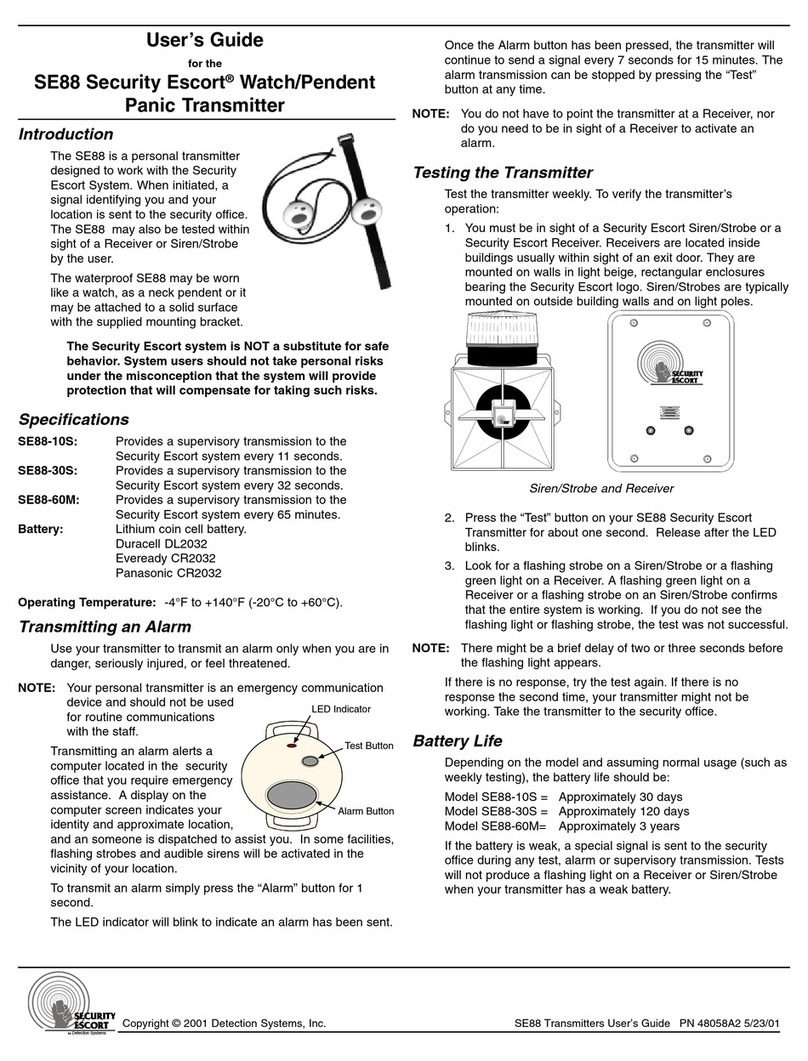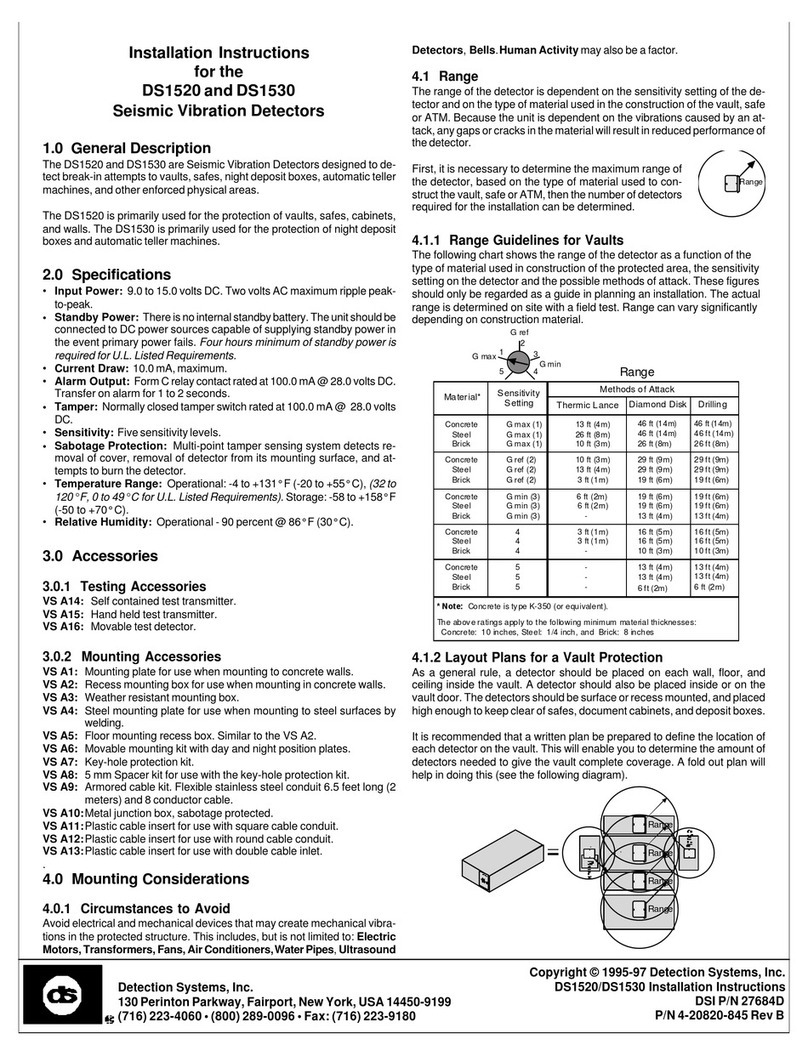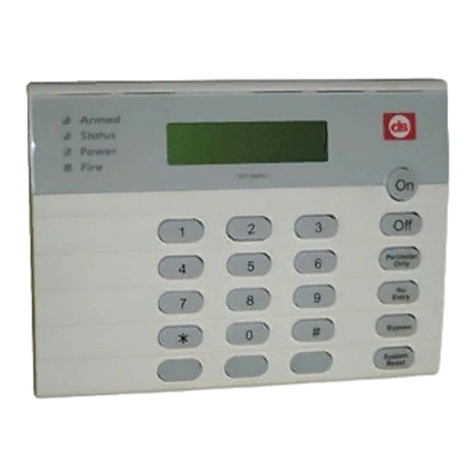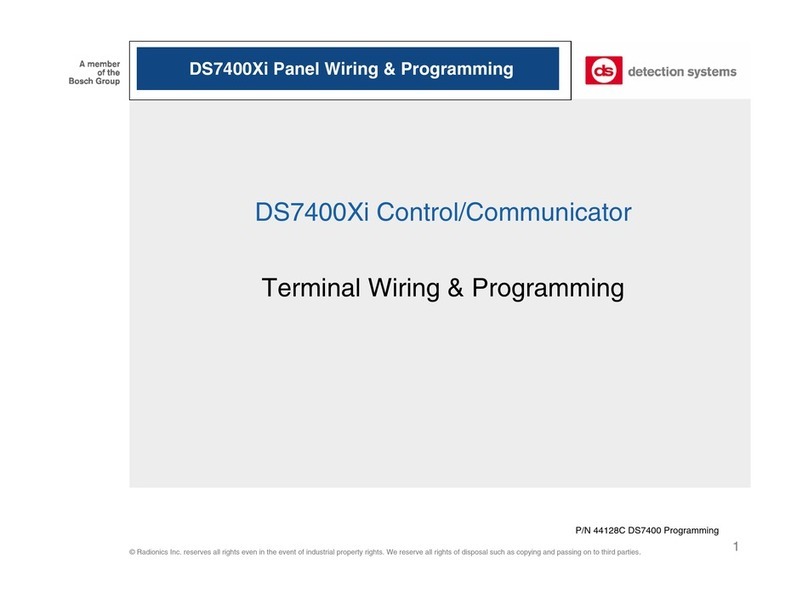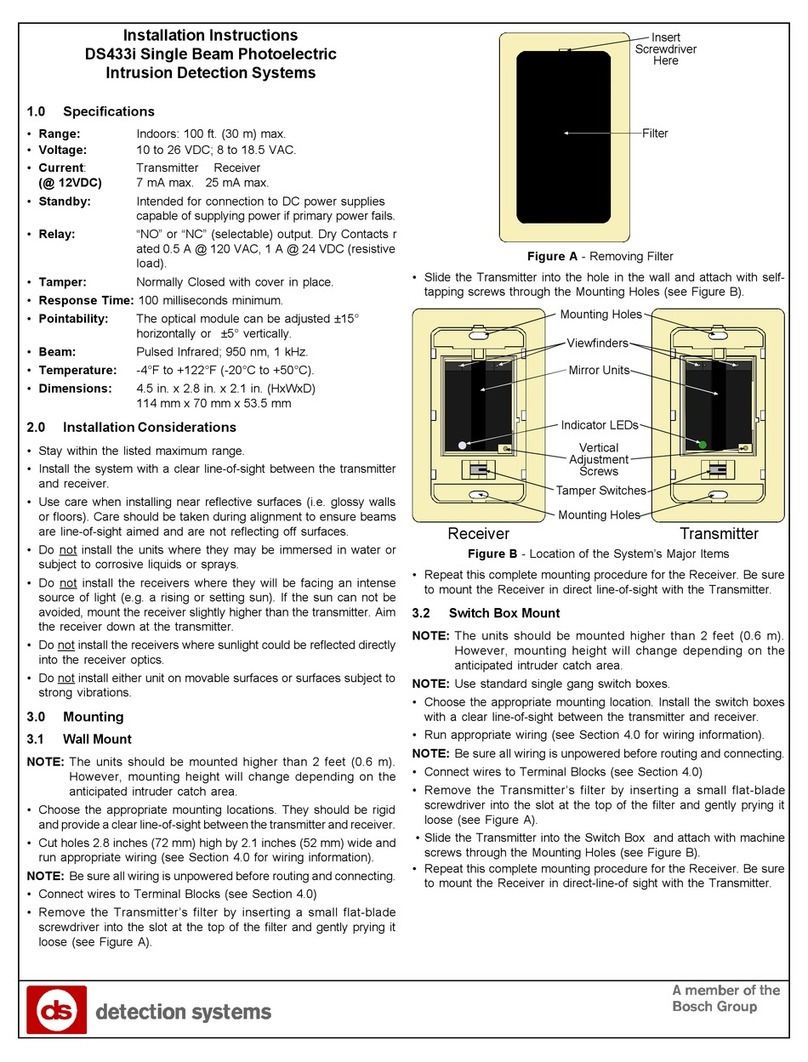
Figura *": Test di controllo e funzionale
Onde evitare falsi allarmi, utilizzando un voltmetro controllare il
livello del segnale di disturbo di fondo nel rivelatore . Impostare
la sensibilitàsu Gmax durante il test.
DS1525 DS1535 Azione correttiva
0,7 V 0 V Nessuna
1,4 V 2 V Ridurre la portata/eliminare la
sorgente di rumore
$
Èpreferibile cercare di eliminare la sorgente del rumore
ambientale, piuttosto che ridurre la portata.
Test funzionale con tester palmare VSA15 'e attrezzo
meccanico (:
DS1525 DS1535
Allarme entro 30 sec. Allarme entro 45 sec.
Allarme dopo 5 colpi N/A
Figura &""
""
": Due modalità per testare i rivelatori sismici
'Possibilitàdi test disabilitata (impostazione predefinita in
(Test interno, dell’elettronica del rivelatore = posizionare il
ponticello fra 1 e 2.
)Test funzionale del rivelatore e del contatto fisico con
l’oggetto protetto = posizionare il connettore del
trasmettitore di prova TT1500 fra 2 e 3.
$
Collegando il morsetto 10 ad un riferimento 0V si attivano
entrambi i test.
- 7 -
Figura ,""
""
": Schema elettrico
1/2. 12 V CC
3. LED
4. Livello integrazione(test point)
5. Normale Chiuso (NC)
6. Normale Aperto (NO)
Figura !": Caratteristiche generali del DS1525/1535
1. Coperchio
2. Vite coperchio
3. Piastra di base
4. Fori di montaggio
5. Morsetto
6. Aree per il montaggio del trasmettitore di prova TT1500
7. Potenziometro per regolare la sensibilitàdel rivelatore
8. Morsettiera
9. Microinterruttore antimanomissione
10. Piastra di montaggio MP1500
11. Vite di fissaggio
12. Tassello ad espansione
13. Trasmettitore di prova TT1500
UtilizzodellapiastradimontaggioMP1500come modello
A. Fori per DS1525/1535
B. Fori per Securitas SSD70
C. Fori per Cerberus GM31/35/550/560
D. Foro di fissaggio per inserire la vite a espansione
E. Fori per Securitas 2000
F. Foro modello per trasmettitore di prova TT1500
G. Fori per accessori
Figura #": Montaggio su cemento
Utilizzare sempre una piastra di montaggio MP1500. Il tassello
ad espansione deve penetrare almeno di 50 mm nel cemento.
Se si installa il trasmettitore di prova TT1500, procedere secondo
le fasi illustrate nella figura 6.
$
Per la conformitàdell’apparecchio alle norme CEI 79-2,
occorre installare il trasmettitore di prova TT1500.
Figura %": Rivelatore montato su una superficie
metallica interponendo la piastra saldata
VSA4
Saldare prima i punti 1, 2, 3 e 4. Quindi saldare i bordi 5 e 6.
Range di rivelazione (in metri):
Cemento 41414
Acciaio 1/Gmax 81414
Muratura 388
Cemento 399
Acciaio 2/Gref 499
Muratura 166
Cemento 266
Acciaio 3/Gmin 266
Muratura -44
Cemento 155
Acciaio 41 55
Muratura -33
Cemento -44
Acciaio 5- 44
Muratura -22
Figura +": Rivelatore montato direttamente su una
superficie metallica senza piastra di
montaggio
7. Comune (C)
8/9. Antimanomissione
10. Comando Test
remoto
11. Riserva
Materiale
Impostazione
sensibilità
Lancia
termica
Disco
diamantato
Perforazione
Dati tecnici: Conforme alle norme CEI 79-2
Alimentazione 9-15 V !"(12 V!nom.)
Ondulazione max. residua 2 Vpp
Consumo di corrente Nominale 8,6 mA
Uscita allarme Relèallo stato solido, contatto a
scambio, resistenza in serie max.
35 Ohm
Indicazione allarme Indicazione a LED, morsetto 3
Sensibilità5 scatti di 6 dB ciascuno
Portata Vedere tabella “Portata di rivelazione”
Protezione antisabotaggio Temp. 84°C, piastra di protezione
antitrapanazione, contatto su
apertura del coperchio e
antirimozione, allarme bassa livello
alimentazione 7,5 V
Temperatura di esercizio da -20 °C a +55 °C
certificato da + 5 a + 40 °C
Dimensioni 100 x 80 x 33 mm
Colore Teknos BE 8086 (Grigio)
Peso 390 g
I
Distribuição : ALARMES TUCANO
Fone/fax : 41 3286-2867 Curitiba - PR
www.securitybosch.com.br






